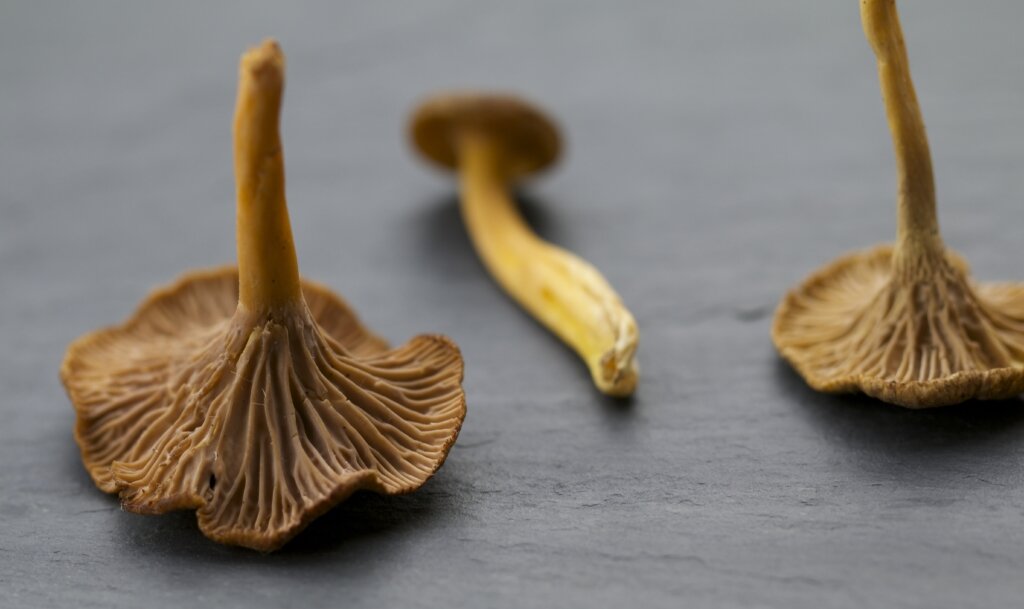Mountain Kings
As I entered the woods with my childhood best friend on my 30th birthday backpacking adventure, my attention was fixed on the ground as we followed a languorous river. Lipstick-red, vomit-inducing emetic Russulas lined the trailside, and acrid peppery milkies were sprayed about the flat forest floor. Deadly destroying angels were everywhere, menacingly elegant and dangerous. Yet a three-mile, flat riverside walk into the backcountry did not reveal a single gourmet mushroom, and the soil seemed drier with each step.
Then, the trail turned and we started climbing steeply. Our legs burned and we began to shed layers as the mid-day sun beat down upon our shoulders. I was no longer looking as intently for mushrooms, my hopes of a hearty harvest shriveling.
The first hedgehog mushroom just presented itself to me, its distinctive pale peach cap leaving no doubt that I would find teeth, rather than pores or gills, below. A first find of the season is always glorious, and a quick scan revealed five more juicy Hydnum repandum within a ten-foot radius. I pulled a paper bag out of my backpack and harvested a handful of plump hogs.
The hedgehogs were soon followed by my season’s first small lion’s mane (Hericium coralloides), and I began to realize that the cold nights and morning mountain mist had invigorated the mushrooms at the higher elevations. Often I look to low bogs and valleys in search of moisture during drought. But higher does not always mean drier, and it is easy to overlook the cool mushroom havens that can be found if you climb into the clouds.
I had a smile to my face as I sauntered higher up the mountain, backpack on my shoulders and paper mushroom bag coddled carefully in my hand. Without even trying, I spotted the prettiest porcini (Boletus cf. edulis) I have seen since my Ithaca foraging days. It stood out like an alpine beacon, a quintessential King with massive, blemish-free stem. The cap was firm and picturesque, and needed no preparation to make a nutty trailside snack. All mushrooms should be cooked as a general rule, but a notable exception is a bug-free King. How could one improve upon such perfection?
As we marched higher still, the trees becoming stunted and misshapen, I was surprised to see the chunky hedgehogs continue to fruit along the trail, and I picked up another season’s first – yellowfoot chanterelles (Craterellus tubaeformis) – just below treeline. We arrived at camp late, too tired to cook or set up a tent, and promptly fell asleep upon a bed of moss and rosy red Russulas.
The next afternoon, on our hike out of the forest, we cleaned and cooked the wild mushrooms (minus the porcini cap) along with sliced summer sausage. Though we had no oil, butter or salt, the result was outstanding and imbued with an exquisite mountain terroir. I typically don’t mix porcini (nutty, earthy) with chanterelles (fruity, floral) in the same pot, but for this wild backcountry one-pot wonder, the medley of mountain mushrooms was balanced and delightful.

